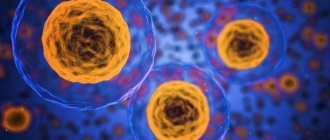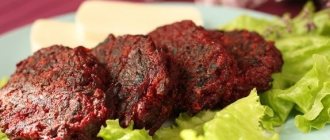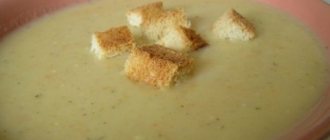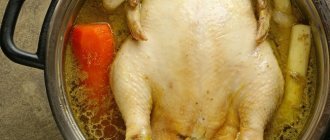Digestion is the process of chemical and mechanical processing of food, during which it is digested and absorbed by the cells of the body. Digestive pigments process incoming food and break it down into complex and simple food components. First, proteins, fats and carbohydrates are formed in the body, which in turn become amino acids, glycerol and fatty acids, monosaccharides.
The components are absorbed into the blood and tissues, contributing to the further synthesis of complex organic substances necessary for the proper functioning of the body. Digestive processes are important for the body for energy purposes. Due to the digestion process, calories are extracted from food, which improve the functioning of internal organs, muscles, and the central nervous system. The digestive system is a complex mechanism that involves the human mouth, stomach and intestines. If foods are not digested correctly and minerals remain unchanged, it will not benefit the body. In a healthy person, all stages of the digestion process last for 24 to 36 hours. Let's study the physiology and features of the digestive process in order to understand how the human body works.
The structure of the digestive system
To understand what digestion is, it is necessary to consider the structure and functions of the digestive system.
It consists of organs and departments:
- oral cavity and salivary glands;
- pharynx;
- esophagus;
- stomach;
- small intestine;
- colon;
- liver;
- pancreas.
The listed organs are structurally interconnected and represent a kind of tube, 7–9 meters long. But the organs are laid out so compactly that with the help of loops and bends they are located from the oral cavity to the anus.
Interesting! Failures in the digestive system lead to various diseases. To ensure proper digestion, give up poor nutrition, fatty foods, and strict diets. Also, the organs are adversely affected by poor ecology, regular stress, alcohol and smoking.
The main function of the digestive process is to digest food and gradually process it in the body to form nutrients that are absorbed into the lymph and blood.
But besides this, digestion performs a number of other important tasks:
- motor or motor is responsible for grinding food, mixing with the secretions of the digestive glands and further movement through the gastrointestinal tract;
- secretory ensures the breakdown of nutritional components into mucous membranes, electrolytes, monomers and final metabolic products;
- absorption promotes the movement of nutrients from the tract cavity into the blood and lymph;
- protective consists of creating barriers using the mucous membrane;
- excretory removes toxic substances and foreign bodies from the body;
- endocrine produces biologically active substances to regulate digestive functions;
- Vitamin-forming ensures the production of vitamins B and K.
Digestive functions include sensory, motor, secretory and absorption. Among non-digestive tasks, scientists distinguish protective, metabolic, excretory and endocrine.
Features of the digestion process in the oral cavity
The stages of human digestion in the oral cavity, where the grinding of food for further processing begins, are important processes. Products interact with saliva, microorganisms and enzymes, after which the taste of food appears and starchy substances are broken down into sugars. The processing process involves teeth and tongue. During coordinated swallowing, the uvula and palate are involved. They prevent food from entering the epiglottis and nasal cavity. The body analyzes incoming food, softens and grinds it. After this, it enters the stomach through the esophagus.
Video
The essence, physiology and features of digestion processes in the human oral cavity
The essence of digestion in the oral cavity is that food is crushed. In the oral cavity, digestion processes involve active processing of food with saliva (0.5-2 liters are formed per day), interaction with microorganisms and enzymes (amylases, proteinases, lipases). In saliva, some substances dissolve and their taste begins to appear. The physiology of digestion in the oral cavity is based on the fact that saliva contains the enzyme amylase, which breaks down starch into sugars.
Thus, the effect of amylase is easy to trace: if you chew bread for 1 minute, you will feel a sweet taste. Proteins and fats are not broken down in the mouth. The average duration of digestion in the oral cavity is minimal and is only 15-20 seconds.
The peculiarities of digestion in the oral cavity are that the food bolus (usually 5-15 cm3 in volume) then moves into the stomach. The act of swallowing includes the oral (voluntary), pharyngeal (fast involuntary), and esophageal (slow involuntary) phases. At this point, the process of digestion in the human oral cavity is considered virtually complete. The average duration of time for a bolus of food to pass through the esophagus is 2-9 s and depends on the density of the food. The digestive tract is equipped with special valves to prevent backflow, as well as to limit the action of digestive enzymes.
Digestive processes in the stomach
The stomach is located in the human body in the left hypochondrium under the diaphragm and is protected by three membranes: external, muscular and internal. The main function of the stomach is to digest food due to the abundant shunting of blood vessels and arteries by capillaries. It is the widest part of the digestive tract and can expand in size to absorb large amounts of food. During the processing of food in the stomach, the walls and muscles contract, after which it mixes with gastric juice. The process of chemical and mechanical treatment in the stomach lasts for 3 to 5 hours. Food is affected by hydrochloric acid, which is contained in gastric juice and pepsin.
Following the logical flow of the digestion process, proteins are processed into amino acids and low molecular weight peptides. Carbohydrates in the stomach stop being digested, so amylases lose their activity in an acidic environment. In the stomach cavity, due to hydrochloric acid, proteins swell and also provide a bactericidal effect. The peculiarity of the gastric digestion process is that foods rich in carbohydrates are processed briefly and after 2 hours they move on to the next process. Proteins and fats remain in the compartment for up to 8 – 10 hours.
Stage II. Digestion in the stomach
Once in the stomach, the food bolus is subjected to mechanical and chemical effects for several hours, depending on its composition and quantity.
Organs involved in the digestion process:
- The stomach is an expanded part of the digestive tube, involved in the digestion of proteins and partly fats.
Step No. 1. Rubbing the food bolus with the walls of the stomach
A bolus of food from the abdominal part of the esophagus (there are only three of them: cervical, thoracic and abdominal) entered the stomach. In the walls of the stomach there are smooth muscles, which contract and begin to grind the food bolus, mixing it with gastric juice, the production of which begins at the sight, smell of food and the entry of food into the oral cavity. As a result of these actions, a food pulp is formed, which is called chyme.
Interesting fact
In an adult, about 2-2.5 liters of gastric juice are formed and secreted during the day. The composition of gastric juice includes enzymes that break down fats and proteins, hydrochloric acid and mucus.
Step No. 2. Treatment of chyme with gastric juice
Under the influence of hydrochloric acid contained in gastric juice, enzyme activity increases, denaturation and fragmentary breakdown of proteins occurs. Hydrochloric acid also destroys the bulk of bacteria that enter the stomach with food, preventing or slowing down the processes of decay.
Gastric juice enzymes, the main one of which is pepsin, are responsible for the breakdown of proteins during digestion in the stomach. As gastric juice penetrates into the food mass, the process of protein breakdown occurs (called “proteolysis”, this is when pepsin converts proteins into peptones and albumoses with the help of hydrochloric acid).
Enzymes are protein substances that ensure the occurrence of any reaction.
Under the influence of gastric juice enzymes in the stomach, complex proteins are broken down, milk is curdled (by the enzyme chemosin), and milk fats are broken down (by the enzyme gastric lipase).
The main function of gastric mucus is to protect the gastric mucosa from mechanical and chemical irritation and self-digestion.
Interesting fact
The human stomach has the ability to pre-prepare for one or another digestive work. The fact is that when we see food, smell it or mentally imagine it, the synthesis of the necessary gastric juice begins in our body. This fact was proven by academician I.P. Pavlov in experiments with dogs.
Suction
In the stomach, water with minerals, alcohol, fatty acids, glycerin, glucose, and medicinal substances are subject to absorption.
Step No. 3. Evacuation of food, that is, removal of food mass (chyme) from the stomach
The removal of food from the stomach occurs gradually and in portions due to the perivarian reflex.
Thanks to the motor function of the organ, the semi-digested food mass begins to move to the muscular valve (sphincter) at the entrance to the duodenum. The opening and closing of the sphincter occurs due to the different environment in the stomach (acidic environment) and the small intestine (alkaline environment). When the gruel is neutralized by the alkaline content in the duodenum, the valve opens and the next portion comes in again.
How does digestion occur in the small intestine?
Partially digested food, along with gastric juice, moves in small portions into the small intestine. This is where more important digestive cycles take place. Intestinal juice consists of an alkaline environment due to the intake of bile, secretions of the intestinal walls and pancreatic juice. The digestion process in the intestines may slow down due to a lack of lactase, which hydrolyzes milk sugar. More than 20 enzymes are consumed in the small intestine as a result of the digestion process. The work of the small intestine depends on the uninterrupted functioning of three sections that smoothly transform into each other: the duodenum, jejunum and ileum.
During digestion, the duodenum receives bile formed in the liver. Due to the compounds of bile and pancreatic juice, proteins and polypeptides are broken down into simple particles: elastase, aminopeptidase, trypsin, carboxypeptidase and chymotrypsin. They are absorbed into the intestines.
Stage III. Digestion in the small intestine.
This is one of the main stages of digestion; the role of its initial section, the duodenum, is especially important. The main processes of digestion of nutrients occur in the small intestine. Under the influence of enzymes from intestinal juice, as well as pancreatic juice and bile, proteins are broken down into amino acids, fats into fatty acids, and carbohydrates into monosaccharides. all these substances: as well as salts and water are absorbed into the blood and lymphatic vessels and carried to our organs and tissues.
In addition, in the small intestine, specialized cells produce some hormones, for example, serotonin, the same “hormone of happiness,” histamine, which stimulates the production of other digestive hormones secreted by the small intestine, secretin, which is involved in the regulation of the secretory activity of the pancreas, and others.
Organs involved in the digestion process:
The small intestine, which is divided into:
- The duodenum, in the cavity of which the main pancreatic duct and the common bile duct are located, here pancreatic juice, bile, as well as intestinal juice and carbohydrates act on food, as a result of which fats and proteins are digested so that they can be absorbed by the body.
- jejunum
- ileum
What is pancreatic juice (or pancreas)?
This is the second largest gland in humans, with a length of 15–22 cm and a weight of 60–100 g. Pancreatic juice neutralizes the acidic contents in the duodenum and breaks down fats, carbohydrates, proteins, and nucleic acids through cavity digestion.
Comprises:
Exocrine gland - synthesizes pancreatic juice, a clear, colorless liquid with an alkaline reaction with a pH of 7.8 - 8.4, which begins to be produced 2-3 minutes after food consumption and continues to be produced for 6 - 14 hours. The longest juice secretion is caused by eating fatty foods.
Endocrine - produces hormones.
What is bile?
The liver, the largest gland in the body, synthesizes and secretes bile, a dark, greenish liquid that accumulates in the gallbladder.
5-10 minutes after eating, bile begins to flow into the duodenum and ends when the last portion leaves the stomach. Bile stops the action of gastric juice and its enzymes.
Bile breaks down fats and, mixing with them, forms an emulsion, improving their breakdown; it also takes part in the absorption of fatty acids, increases the production of pancreatic juice and activates intestinal motility (the movement of food gruel through the intestines)
What is intestinal juice?
The structure of the wall of the small intestine is similar in all sections. It consists of the inner mucosa, submucosa, muscular and outer serosa.
The inner (mucous) lining of the small intestine contains special glands that produce and secrete intestinal juice (colorless liquid, cloudy from mucus and epithelial cells), which contains a complex of more than 20 digestive enzymes - over 20
The main function of intestinal juice is to complement the digestion process in the small intestine with its action.
About the types of digestion in the small intestine
There are 2 types of digestion in the intestines: cavity and parietal.
- Cavity digestion is carried out by enzymes in the organ cavity
- Parietal digestion occurs in the lumen of the small intestine on the inner mucous surface due to the enzymes of pancreatic juice, bile and intestinal juice enzymes, which are active in an alkaline environment.
Proteins are broken down into amino acids and peptones (large protein fragments), fats into fatty acids, disaccharides into monosaccharides.
The small intestine breaks down nutrients into final products.
Suction
The entire surface of the mucous membrane of the small intestine in the folds and between them is covered with intestinal villi, which consist of absorptive cells. It is the presence of these villi that increases the absorption surface of the intestine and as a result of this process, the resulting food substances penetrate into the blood, but not into the general bloodstream, but first accumulate in the portal vein and move to the liver, since when food is broken down, not only useful compounds are formed, but also by-products products - toxins that are released by intestinal microflora, drugs and poisons contained in products at the level of modern ecology.
The liver is the body's biochemical laboratory. Here harmful compounds are disinfected and fat, protein and carbohydrate metabolism is regulated.
Interesting fact
Within one minute, virtually 1.5 liters of blood passes through the liver, and the vessels of the organ contain up to 20% of the total blood volume.
Undigested food remains from the ileum pass through the valve (sphincter) into the large intestine, where the final IV stage of digestion in the large intestine begins.
Liver functions
It should be noted the invaluable role of the liver, which produces bile during the digestion process. The work of the small intestine would not be complete without bile, as it helps emulsify fats, activate lipases and absorb triglycerides into the stomach. Bile stimulates perilstatics, enhances the absorption of proteins and carbohydrates, increases hydrolysis and promotes the inactivation of pepsin. Bile plays an important role in the absorption and dissolution of fats and fat-soluble vitamins. If there is not enough bile in the body or it is secreted into the intestines, then the digestive processes are disrupted, and fats are released in their original form when feces are released.
Functions and features of the digestive process in the human small intestine
From the stomach, the bolus of food enters the small intestine, the length of which in an adult reaches 6.5 meters. Digestion in the small intestine is the most important from a biochemical point of view of the absorption of substances.
The intestinal juice in this section of the digestive tract has an alkaline environment due to the entry of bile, pancreatic juice and secretions of the intestinal walls into the small intestine. Some people experience a slow digestion process in the small intestine due to a deficiency of the lactase enzyme, which hydrolyzes milk sugar (lactose), which is associated with the indigestibility of whole milk. In total, more than 20 enzymes are used in digestion in the human small intestine (enterokinases, peptidases, phosphatases, nucleases, lipase, amylase, lactase, sucrase, etc.).
The functions of digestion in the small intestine depend on its sections. The small intestine has three sections passing into each other - the duodenum, jejunum and ileum. Bile is secreted into the duodenum, which is formed in the liver. In the duodenum, food is exposed to pancreatic juice and bile. The juice secreted by the pancreas is a colorless transparent liquid with a pH of 7.8-8.4. Pancreatic (pancreatic) juice contains enzymes that break down proteins and polypeptides: trypsin, chymotrypsin, elastase, carboxypeptidases and aminopeptidases.
Pancreatic juice contains: lipase, which breaks down fats; amylase, which completes the breakdown of starch to the disaccharide maltose; ribonuclease and deoxyribonuclease, which break down ribonucleic and deoxyribonucleic acids. The secretion of pancreatic juice, depending on the composition of the food, lasts 6-14 hours, it is longest when eating fatty foods.
The liver plays an important role in the digestion process, where bile is formed (0.5-1.5 l per day). Features of digestion in the small intestine are that bile promotes the emulsification of fats, the absorption of triglycerides, activates lipase, stimulates peristalsis, inactivates pepsin in the duodenum, has a bactericidal and bacteriostatic effect, enhances the hydrolysis and absorption of proteins and carbohydrates.
Bile does not contain digestive enzymes, but is necessary for the dissolution and absorption of fats and fat-soluble vitamins. With insufficient production of bile or its release into the intestines, the digestion and absorption of fats is disrupted, and their excretion increases unchanged in feces.
The final digestion of carbohydrates, protein residues, and fats occurs in the jejunum and ileum with the help of enzymes that are produced by the cells of the mucous membrane of the intestine itself. The outgrowths of the wall of the small intestine are covered with enterocytes - villi. Through many villi from its surface, the products of the breakdown of proteins and carbohydrates enter the blood, and the products of the breakdown of fats enter the lymph. Due to the large number of special folds and villi, the total absorption surface of the intestine is about 500 m2.
The absorption of the bulk of simple chemical fragments of food occurs in the small intestine.
Importance of the Gall Bladder
In the gallbladder of a healthy person, reserves of bile are deposited, which the body uses when processing a large volume. The need for bile disappears after the duodenum is empty. But the liver's work does not stop when food is eliminated. It produces bile, storing it in the gallbladder so that it does not spoil and is stored until the need for it arises again.
If the gallbladder is removed from the body for some reason, its absence is easily tolerated. Bile is stored in the bile ducts and from there it is easily and continuously sent to the duodenum, regardless of the fact of food intake. Therefore, after surgery, you need to eat often and in small portions so that there is enough bile to process it. This is due to the fact that there is no more space to store leftovers, which means that the reserve stock is extremely small.
Features of the large intestine
The remains of undigested food enter the large intestine. They stay in it for 10 – 15 hours. During this period, water absorption and microbial metabolization of nutrients occur. Thanks to the microflora of the large intestine, dietary fiber, which is classified as indigestible biochemical components, is destroyed in this section.
Among them are:
- wax,
- resin,
- gum,
- fiber,
- lignin,
- hemicellulose.
Feces are formed in the large intestine. They consist of residues that have not been digested during digestion, mucus, microbes and dead cells of the mucous membrane.
Hormones that affect digestion
In addition to the main sections of the gastrointestinal tract, the quality and speed of the digestion process are influenced by biologically active substances.
| Name | Which department are they in? | Function |
| Gastroenteropancreatic endocrine system | endocrine system | produces peptide hormones |
| Gastrin | pyloric region | increased secretion of gastric juice, pepsin, bicarbonates and mucus, inhibition of gastric emptying, increased production of prostaglandin E |
| Secretin | small intestine | increased stimulation of bile production, increased alkali in pancreatic juice, provides up to 80% of bicarbonate secretion |
| Cholecystokinin | duodenum, proximal jejunum | stimulation of sphincter of Oddi relaxation, increased bile flow, increased pancreatic secretion |
| Somastostatin | pancreas, hypothalamus | decreased secretion of insulin, glucagon, gastrin |
As we see, the digestion process in the human body is a complex system, without which human life is impossible. Proper absorption of food contributes to the quality of the body. Each organ that makes up the gastrointestinal tract plays an important role. To maintain health, it is necessary to adhere to the principles of rational nutrition and eliminate bad habits. Then the mechanisms will work like clockwork.










